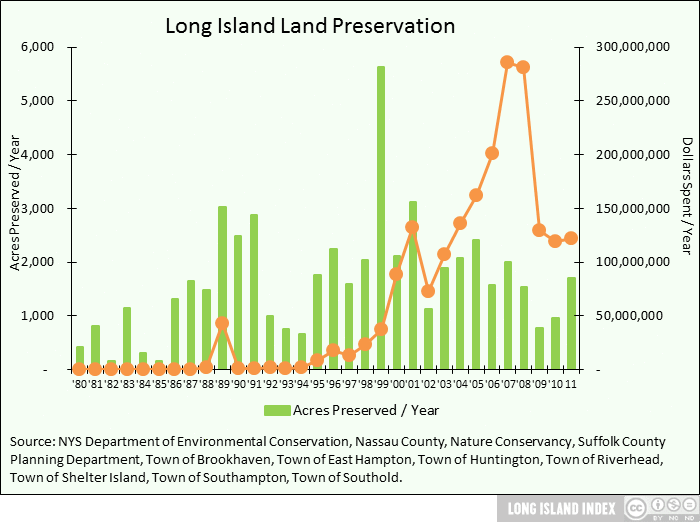It is virtually guaranteed that Long Island will not meet its goal to preserve 10% of the Island’s land mass as open space and farmland by 2016.
Why is this important?
Land preservation is important on Long Island for reasons both environmental and economic. Preserved lands protect the Island’s drinking water, provide critical habitat for wildlife, ensure the viability of the Island’s farming industry and maintain the strength of its tourism sector.
Since 1997, the State, both counties and numerous towns across the Island have expended $1,994,660,776 to preserve 62,632 acres of land on Long Island. This land helps to protect Long Island’s drinking water, critical environmental habitats and the Island’s general quality of life. With experts forecasting the Island’s final build-out to take place within the next decade, the NYS Department of Environmental Conservation’s (DEC) 2006 plan called for the preservation of 25,000 acres of environmentally significant open space and 12,000 acres of working farmland before that time. Attaining that goal would leave the Island with 92,147 acres of preserved land, just 1/10th of its total land mass, at the time of final build-out.
How are we doing?
In 2011, Long Island spent approximately $121,858,000 to protect 1,703 acres of land. While both of these numbers represent an increase over 2010 rates, they fall far short of what would be needed to achieve Long Island’s preservation goals and failed to fully capitalize on the lowest average cost per acre since 2005. In the 6 years since the DEC released its plan, the Island has preserved 8,349 acres. To achieve the goal of preserving 37,000 acres within a decade, the Island would need to preserve an additional 28,651 acres over the next 4 years, a goal that seems highly unlikely.
